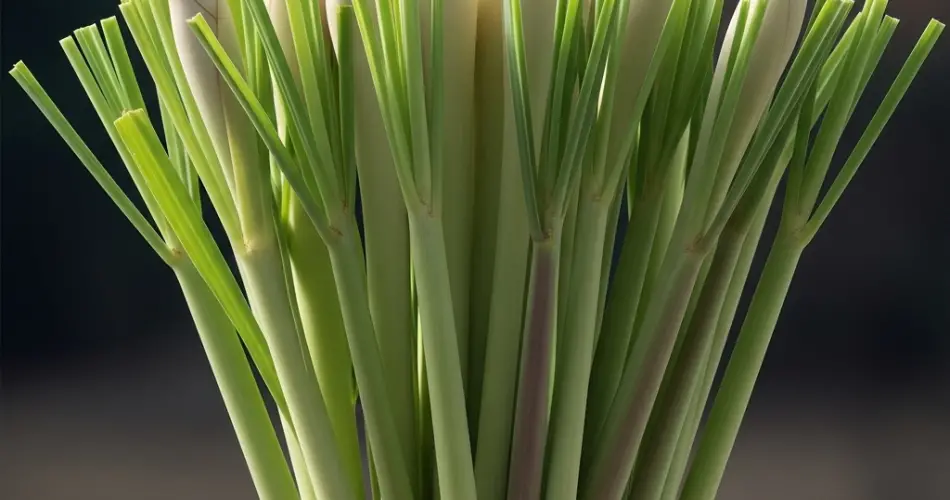Lemongrass (Cymbopogon citratus) is a fragrant herb used in culinary dishes, teas, and natural remedies. While it prefers fertile, well-draining soil, it’s surprisingly adaptable and can be grown even in less-than-ideal conditions with a few smart techniques. If you’re working with poor soil — whether it’s sandy, compacted, or low in nutrients — you can still cultivate healthy lemongrass plants by improving drainage, amending the soil, and applying consistent care.
Here’s a step-by-step guide to successfully growing lemongrass in poor soil conditions.
1. Choose the Right Location
Even in poor soil, lemongrass needs plenty of sunlight to thrive. Select a spot that receives at least 6 to 8 hours of full sun each day. Avoid areas with too much shade, as low light can weaken the plant and reduce its essential oil production, which gives it its aroma and flavor.
If your soil is extremely poor or heavy with clay, consider planting lemongrass in raised beds or large containers where you can better control the growing medium.
2. Prepare and Amend the Soil
Lemongrass prefers slightly acidic to neutral soil (pH 6.0 to 7.5). Poor soil is often compacted, lacks organic matter, and drains poorly — conditions that can stress lemongrass roots.
To improve poor soil:
-
Loosen the soil to a depth of 12–18 inches using a shovel or garden fork. This breaks up compacted layers and improves root penetration.
-
Add organic matter such as compost, aged manure, shredded leaves, or coconut coir. These amendments improve soil texture, add nutrients, and enhance water retention without causing soggy conditions.
-
Mix in sand or perlite if drainage is a problem, especially in clay soils.
If you’re using containers, create a mix of garden soil, compost, and coarse sand or perlite in equal parts. This will give you a well-aerated medium that supports healthy growth.
3. Start from Stalks or Seedlings
You can grow lemongrass from nursery seedlings or fresh stalks purchased from grocery stores:
-
For stalks: Choose healthy, firm stalks with the base still intact. Trim the top leaves, then place the stalk in a glass of water near a sunny window. Change the water every few days. Roots should appear in 1–2 weeks.
-
Transplant the rooted stalks into your prepared soil or containers, spacing them 12 to 24 inches apart.
Lemongrass can also be grown from seed, though it’s a slower process. If using seeds, start them indoors and transplant the seedlings once they’re 3–4 inches tall.
4. Water Wisely
In poor soil conditions, maintaining proper moisture can be tricky. Sandy soil may dry out too quickly, while clay soil may retain too much water. Lemongrass needs consistently moist, but not soggy, soil to establish strong roots.
-
Water deeply once or twice a week depending on your weather and soil type.
-
Mulch around the base of the plant with organic materials like straw, grass clippings, or shredded leaves to conserve moisture and reduce temperature stress.
Monitor your soil’s moisture level by sticking your finger about an inch deep into the soil. If it feels dry, it’s time to water.
5. Feed the Plant Occasionally
Poor soil often lacks nutrients. While lemongrass is relatively low-maintenance, occasional feeding helps it grow lush and tall.
-
Apply a balanced organic fertilizer or compost tea every 4 to 6 weeks during the growing season.
-
Avoid synthetic high-nitrogen fertilizers, which can promote excessive leaf growth at the expense of essential oil concentration.
Foliar feeding with seaweed extract or fish emulsion can also be beneficial if the plant appears stunted or pale.
6. Control Weeds and Pests
Weeds compete for limited nutrients in poor soil, so keep the area around your lemongrass free from unwanted plants. Use mulch or hand-pulling to manage weed growth.
Lemongrass has few pest issues, but you may occasionally encounter aphids, spider mites, or grasshoppers. If needed, spray with neem oil or a mild soap solution to keep pests under control.
7. Prune for Bushier Growth
To encourage bushy, vigorous growth, trim the outer stalks and leaves regularly once the plant is established. This will help redirect energy to new shoots at the center and keep the plant manageable.
Avoid cutting too close to the base; always leave some foliage to support photosynthesis and regrowth.
8. Harvest Properly
Lemongrass can be harvested once stalks reach about 1/2 inch thick and are 12 inches or more in height. To harvest:
-
Use a sharp knife or garden shears to cut stalks at the base.
-
Harvest outer stalks first, allowing the inner shoots to continue developing.
The leaves can be trimmed and used fresh, dried, or for brewing herbal teas.
Final Tips
-
Grow in containers if soil conditions are too poor or hard to fix. Large pots allow you to create the ideal growing environment from the start.
-
Divide clumps annually to rejuvenate old plants and encourage fresh growth.
-
In cooler regions, bring containers indoors during the cold season or overwinter lemongrass by storing trimmed stalks in water or damp sand.
With thoughtful preparation and care, even gardeners working with poor soil can grow thriving lemongrass plants. By improving drainage, adding organic matter, and providing consistent moisture and sunlight, you can enjoy a steady supply of fresh, fragrant lemongrass right from your own garden.



